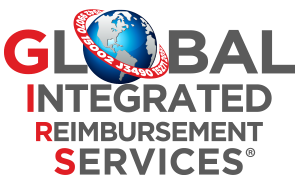While cancer diagnoses have decreased over time, the incidence of cancer in the United States has increased, due in large part to the growing and aging population. Spending for cancer care continues to increase as many new cancer treatments are approved and entering the market. Payers are constantly looking at ways to manage those high costs through restricting access to and coverage for certain cancer drugs.
According to 2015 data from the Centers for Disease Control and Prevention (CDC), cancer is the second leading cause of death in the United States. This means that one in four people will die of cancer. This is a problem because, according to a recent study, from 2011 – 2016, cancer spending increased by 57%, from $26.8 billion to $42.1 billion. Additionally, 52 new cancer treatments were approved by the United States Food and Drug Administration during this time. A recent analysis of the issue suggests that a constrained financial system, the way in which cancer drugs are packaged, rising drug costs, an increase in technological advances, and the aging US population are all contributing causes to these rising costs.
Concerns are also rising about the tactics being used to control this high level of spending. While some are leery of only implementing value-based policies, others are being more creative with their strategies for addressing these issues. Some could even consider the exclusion of brand name cancer drugs from formularies as a way to manage cost, but such a decision may also decrease access to life-saving or life-extending cancer treatments.
To address these issues, both the Centers for Medicare and Medicaid Services (CMS) and the American Society of Clinical Oncology (ASCO) are looking at value-based approaches to improve care while managing cost and access to oncology treatments.
- CMS is developing the Oncology Care Model (OCM) to use appropriately aligned financial incentives to enable improved care coordination, appropriateness of care, and access to care for beneficiaries undergoing chemotherapy. The OCM aims to improve care and lower costs through an episode-based payment model that financially incentivizes high-quality, coordinated care for Medicare beneficiaries.
- The ASCO has also developed the Value Framework, which assesses the “value of new cancer therapies based on clinical benefit, side effects, and improvements in patient symptoms or quality of life in the context of cost,” which some experts feel may be adopted in the future.
While these new types of payment models and frameworks show promise for the future, currently, many patients have problems getting timely access to their cancer drugs. These patients are incurring high out-of-pocket costs, such as copays and deductibles, which ultimately hinder their care.
Global Integrated Reimbursement Services, Inc. has experience with improving market access for costly drugs and supporting patient assistance programs. If you would like to expand coverage and payment for your accounts in key payer markets and are experiencing claims denials for your cancer drug, or if you need to improve the market uptake and patient access in key markets, our Payer Advocacy Compass® (PAC) team can assist you to meet your company goals.
To implement successful market access strategies, the GIRS Value Discovery Landscape Assessment® team can also conduct a Reimbursement Landscape Assessment to develop payer-desired strategies with clinical outcomes experts, coding experts, policy staff, reimbursement lawyers, and a panel of current insurer medical directors. This work will provide you with foundation reimbursement strategies that will influence and coordinate your clinical outcomes, marketing, and reimbursement strategies to result in the best market access outcomes. The PAC team can then implement these strategies to obtain positive coverage, appropriate payment, and innovative payer contracting arrangements to improve market uptake. Please contact us by email or call us at 1-844-514-4477. Also, follow our LinkedIn Company Page for more bi-weekly news on reimbursement trends, milestones, and achievements.
Sources:
1. Centers for Disease Control and Prevention. United States Cancer Statistics: Data Visualizations.
2. Hong, S., Li, E., Matusiak, L. & Schumock, G. (2018). Spending on Antineoplastic Agents in the United States: 2011-2016. Journal of Oncology Practice, JOP.18.00069. doi: 10.1200/jop.18.00069
3. Mulcahy, N. (2018). Big Jump in US Spending on Cancer Drugs from 2011 to 2016.
4. Goodman, A. (2017). Value-Based Approaches to the Rising Costs of Cancer Drugs.
5. Centers for Medicare and Medicaid Innovation. Oncology Care Model.
6. American Society of Clinical Oncology. Value in Cancer Care.

